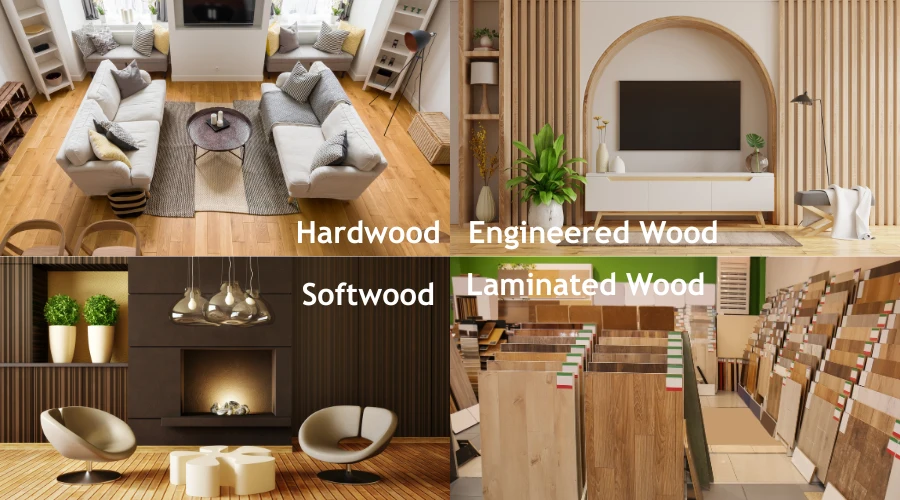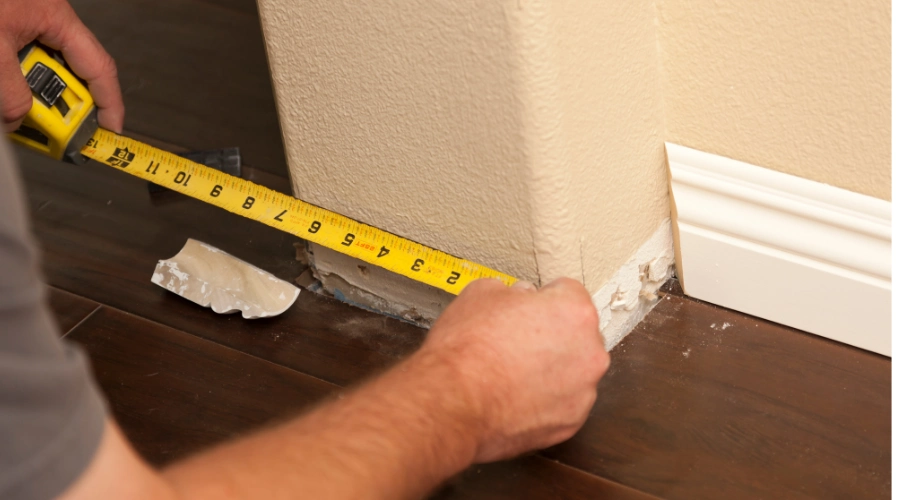Having a living space with a warm, elegant, inviting atmosphere and a timeless appearance is essential to make a stunning first impression. However, only limited flooring options can cover all these aspects. One such attractive and durable flooring option is wood flooring. It transforms the looks of any building like nothing else. But keeping in mind the cost and budget is crucial. This blog will explore wood flooring costs in detail and give you an overview of things that affect wood flooring cost.
Factors Affecting Wood Floor Cost
Type of Wood

- Hardwood is the most common and popular choice for flooring. These woods are from the trunks of the trees, like maple, oak, cherry, and walnut. These woods are more expensive due to their density and durability.
- Engineered Wood is a composite material made of wood particles or veneers with adhesives, making it more stable than hardwood. It is ideal for places with high fluctuations in humidity and is one of the most affordable wood types.
- Softwood is the affordable wood type that is made from the trunks of pine and fir. Although these woods are affordable, they are less durable and may not be suitable for high-traffic areas.
- Laminated Woods are synthetic materials that mimic the appearance of wood. It is a budget-friendly option and is highly durable, but lacks the natural looks and warmth of real wood.
Quality
The quality of the wood is another major factor that determines the cost of the flooring. High-quality woods that are highly durable require less maintenance and provide a more elegant finish. On the other hand low-grade woods that have imperfections, knots, and cavities can result in cheaper prices, which could affect durability and longevity.
Flooring Size and Area
The size of the flooring area determines the number of woods required, which directly influences the total cost. Larger spaces require more material and result in higher costs, and the layout of the area with more interruptions could cost high for installation.
Installation Costs
The installation cost of wood flooring varies based on the type of wood, the complexity of installation, experience, and the number of installers employed. Factors like subfloor preparation, removal of existing flooring, and the need for underlayment can influence the overall installation cost.
Finish and Customization
Wood flooring finishes play an important role in deciding the overall cost. The customized finishes and the detailing, such as staining, sanding, and distressing, add more cost. Wood flooring with a natural finish and pre-coating is generally affordable, but wood with a custom finish increases labour costs.
Maintenance Costs
Wood floors require regular cleaning and maintenance, including repairs and refinishing. The maintenance costs vary based on the frequency, type of wood, finishing, and level of traffic.
Average Wood Flooring Costs
| Flooring Type | Average Cost(Per Sq. Ft.) | Installation Cost(Per Sq. Ft.) | Maintenance Cost(Per Sq.Ft.) |
| Solid Wood Flooring | ₹500 to ₹1500 | ₹100 to ₹300 | ₹50 to ₹150 |
| Engineered Wood | ₹300 to ₹1200 | ₹80 to ₹250 | ₹30 to ₹100 |
| Laminated Wood | ₹100 to ₹500 | ₹50 to ₹150 | ₹20 to ₹50 |
Breaking down the cost, laminated wood is more affordable, but it is not the actual wood; it is just a synthetic material that mimics the wooden look. It is an alternative to other wood flooring but may lack the natural looks. Apart from this, engineered wood could be an affordable option due to its high durability and occasional maintenance. Solid wood flooring can be expensive, but the durability, longevity, and luxurious looks it offers are undeniable, making it a valuable option.
Additional Considerations For Budgeting
Subfloor Preparation

Uneven subfloors can cause problems with installing the wood floors, which could affect the long-term performance of the flooring. Additionally, for places prone to moisture, subfloor preparation is a must to both level the surface and create moisture barriers. It results in increasing the overall cost.
Removal of old Flooring
If you are replacing existing flooring, the cost of removing old flooring, such as tiles, carpets, or other flooring materials, could be an add-on, especially if there is difficulty in removing it.
Delivery Charges
The transportation cost of wood can be added to the overall cost. The price can vary based on the availability and the distance from where it is sourced. If the wood is sourced from exotic trees from a different city, it would consume a marginal part of the cost.
Waste Disposal
Waste generated by destroying existing flooring systems, packaging materials, and other waste produced during installation should be properly disposed of from the site, which requires transportation and disposal costs.
Additional Materials
Additional materials that are used along with the installation of wood flooring could be an add-on to the overall flooring cost. The cost spent on materials used for
- Underlayments such as insulation, soundproofing, and moisture protection.
- Moulding and trimming like baseboards, transition strips, and trim pieces.
- Fasteners such as nails, screws, or adhesives that are used for installation.
Conclusion
In summary, wood flooring can be a stunning addition to any home or commercial space, but it is important to balance the style and your budget. By understanding the costs involved from choosing the right wood to installation to maintenance, it will help keep the wood flooring cost within the budget and reduce the chance of cost overrun. So, take your time planning your budget and choose the wood flooring option accordingly that works both for your home and your wallet.

